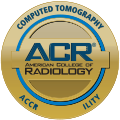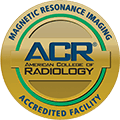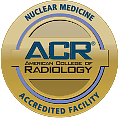Diagnostic Imaging Services
South Texas Health System McAllen has an Advanced Imaging Center that gives physicians a clear picture of their patients' problems. Our diagnostic services include state-of-the-art diagnostic tools including magnetic resonance imaging (MRI), computed tomography (CT), ultrasound and nuclear medicine that enable physicians to diagnose and understand the nature of illness.
Pre-register for Your Appointment Online
Did you know? Special cash pricing is available for mammograms during South Texas Health System’s Think Pink campaign in October.
Diagnostic imaging services at South Texas Health System McAllen include:
- Canon Genesis 640 Slice Spiral CT
- 2D-3D Mammography
- Stereotactic Biopsy
- Digital X-Ray
- Canon Vantage Titan 1.5T MRI
- CT Low Dose Cancer Screening
- Dual Energy X-ray Absorptiometry (DEXA)
- Nuclear Medicine
- Vascular Lab
- Ultrasound
- Interventional Radiology
- Diagnostic Radiology
- Swallowing Function
- Surgical Radiology
To find a doctor for radiology and imaging services, call the South Texas Health System Reserve and Learn line at 800‑879‑1033 and select option 1.
Computed Tomography (CT)
Computed tomography, also known as a CT or CAT scan, generates detailed images of an organ by using an X-ray beam to take images of many thin slices of that organ and joining them together to produce a single image. The source of the X-ray beam circles around the patient and the X-rays that pass through the body are detected by an array of sensors. Information from the sensors is computer processed and displayed as an image on a video screen.
South Texas Health System McAllen is accredited in computed tomography by the ACR. The ACR gold seal of accreditation represents the highest level of image quality and patient safety.
3D Tomosynthesis Digital Mammography
Did you know? Special cash pricing is available for mammograms during South Texas Health System’s Cinco de Mammo campaign in May and Think Pink campaign in October.
 Digital mammography is a highly advanced procedure for breast cancer screening that can drastically improve results. The machine takes an electronic image of the breast and stores it on a computer, allowing it to be enhanced, modified or manipulated for further evaluation. Unlike film mammography, digital mammograms can be viewed on a computer or printed and can even produce traditional films, allowing for improved means of transmission, storage and retrieval of images. Digital imaging allows the images to be manipulated in numerous ways to aid in the identification of tumors.
Digital mammography is a highly advanced procedure for breast cancer screening that can drastically improve results. The machine takes an electronic image of the breast and stores it on a computer, allowing it to be enhanced, modified or manipulated for further evaluation. Unlike film mammography, digital mammograms can be viewed on a computer or printed and can even produce traditional films, allowing for improved means of transmission, storage and retrieval of images. Digital imaging allows the images to be manipulated in numerous ways to aid in the identification of tumors.
Advantages of 3D tomosynthesis mammography over traditional 2D mammography include:
- More accurate detection
- Earlier diagnosis of cancer
- Better detection in dense breast tissue
- Less anxiety as a result of improved accuracy and fewer false alarms
- Safer and more effective
Special Savings on Screenings
To receive savings on special cash pricing at South Texas Health System McAllen, click on the links below:
Magnetic Resonance Imaging
South Texas Health System McAllen received accreditation in MRI in 2017 as the result of a review by the American College of Radiology (ACR). The ACR gold seal of accreditation represents the highest level of image quality and patient safety.
MRI uses radio waves and a strong magnetic field to create clear, detailed images of internal organs and tissues. Since X-rays are not used, no radiation exposure is involved. Instead, radio waves are directed at the body. Many studies will require a small intravenous injection of a contrast agent. MRI is often used to evaluate tumors and diseases of the liver and bowel. Breast MRI is also available.
Non-contrast Magnetic Resonance Angiogram of the vessels is also available.
Additional Patient Resources
Nuclear Medicine
Nuclear medicine uses small amounts of radioactive material, administered to the patient, to diagnose and treat a variety of diseases, including many types of cancers, heart disease and certain other abnormalities within the body. Nuclear medicine offers unique diagnostic information about the function of many organs in the body that other imaging methods may not provide. This form of imaging can often identify abnormalities very early in the progression of a disease, enabling treatment to begin at the earliest stage of a disease.
South Texas Health System McAllen is accredited in nuclear medicine by the ACR. The ACR gold seal of accreditation represents the highest level of image quality and patient safety.
Ultrasound (Sonography)
 High frequency sound waves are used to see inside the body. A transducer — a device that acts like a microphone and speaker — is placed in contact with the body using a special gel that helps transmit the sound. As the sound waves pass through the body, echoes are produced and bounce back to the transducer. By reading the echoes, the ultrasound can produce images that illustrate the location of a structure or abnormality, as well as provide information about its composition. Ultrasound is a painless way to examine the heart, liver, pancreas, spleen, blood vessels, kidney or gallbladder, and is a crucial tool for obstetrics. Breast ultrasound is also available.
High frequency sound waves are used to see inside the body. A transducer — a device that acts like a microphone and speaker — is placed in contact with the body using a special gel that helps transmit the sound. As the sound waves pass through the body, echoes are produced and bounce back to the transducer. By reading the echoes, the ultrasound can produce images that illustrate the location of a structure or abnormality, as well as provide information about its composition. Ultrasound is a painless way to examine the heart, liver, pancreas, spleen, blood vessels, kidney or gallbladder, and is a crucial tool for obstetrics. Breast ultrasound is also available.
Interventional Radiology
While radiology services are typically used to take and interpret medical images, interventional radiology enables doctors to use medical imaging to perform minimally invasive surgical procedures – allowing for enhanced visualization, workflow and performance.
Featuring the Canon Alphenix Sky+ system – a first-of-its-kind-in-the-Valley 3D interventional system – the interventional radiology lab enables physicians to perform minimally invasive procedures through small incisions in the body while using diagnostic imaging tools like CT, ultrasound and fluoroscopy, to guide their procedures. Using high-definition flat panel technology, the device produces high-quality images, enabling clinicians to see finer details during the interventional radiology procedures, which may be performed during an inpatient or outpatient visit.
Interventional radiologists perform a broad range of procedures, such as angioplasty/stent placement, biopsy, embolization, fluoroscopy and thrombolysis/thrombectomy.
X-Ray
An X-ray image is produced when a small amount of radiation passes through the body to create an image on sensitive digital plates on the other side of the body. The ability of X-rays to penetrate tissues and bones depends on the tissue's composition and mass, and the difference between these two elements creates the image. Contrast agents, such as barium, may be swallowed to outline the esophagus, stomach and intestines to help provide better images of an organ.
NOTE: If you are pregnant or nursing, you should not have any form of X-ray. Please tell your technician of any medication you’re currently taking.



